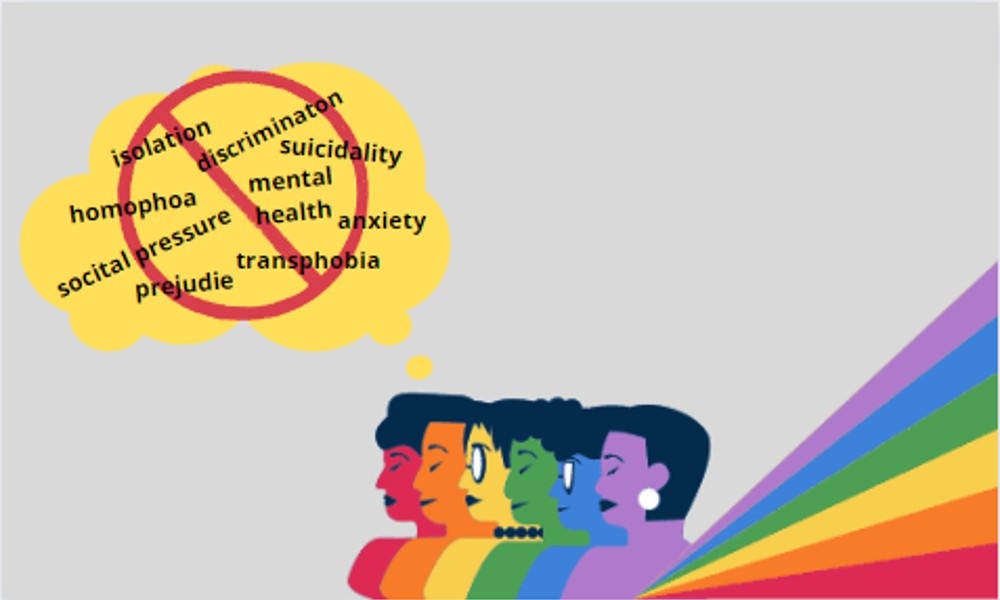Despite high mental health and suicide risks among gender minorities, prevention efforts remain stagnant.
Uma, a transgender activist and founder of Jeeva organisation said, “My friend Sujata *name changed* committed suicide a year ago after being betrayed by her former partner when she came out as transgender. Her inability to carry the shame of being abandoned by someone she was very close to broke her mentally. She was shunned for who she was, triggering her to take this drastic step, but this is just one case. Over the years we have seen so many of our community members who committed suicide or went into depression.”
Although there is a lack of scientific documentation of suicide rates or suicide attempts among transgenders in India, a report in Karnataka showed that the suicide rate among transgender individuals is approximately 31 percent which is higher compared to the last two years. Moreover, the report suggests that 50 percent of transgender teens and middle-aged transgender adults had attempted suicide at least once.
Ishwaryah Manikandan, Legal Officer at Neuralix said that the State Cabinet approved the Karnataka State Mental Healthcare Rules 2021 for implementing the Mental Healthcare Act, 2017, providing health care and services for patients with mental illness in order to protect, promote, and fulfil such patients’ rights.
“However, the law does not address any specific concern faced by the transgender or LGBTQIA+ communities, in particular, it merely aims to address the problem of suicide in India as a mental health issue,” she added.
Kanav Narayan Sahgal, programme manager at Vidhi Centre for Legal Policy, a legal think tank in Delhi stated, “Lack of sensitivity and awareness are some of the reasons it is still ignored. It’s essential to make trans issues a priority because they are very complicated and are not the same as the issues of those the cisgender community face.”
Recent research by the National Alliance of Mental Illness (NAMI), indicates that individuals who belong to gender minority communities have a higher risk of experiencing mental health conditions –especially depression and anxiety disorders. The percentage of LGBTQ (Lesbian, gay, bisexual, transgender and Queer) adults who have a mental health condition is twice as high as the percentage of heterosexual (people whose gender identity corresponds with their birth sex) adults. Transgender individuals are nearly four times more likely to have a mental health condition than cisgender individuals. Youth who identify as LGBTQ are more than twice as likely to report persistent feelings of sadness or hopelessness as their heterosexual peers.
In 2016, Hariharan, a queer individual, was sexually assaulted during a Pride March, which sowed a seed of trauma in him for years. “It took me years to recover and I did not attend Pride marches for a long time because I was scared it would happen again.”
“Queer folks like me are more likely to suffer from anxiety and depression and other mental illness due to the amount of sociological pressure that is put on us not just from our biological family but also the society,” he said.
“Most of the members of the community I have interacted with seem to suffer from depression or mental health issues that they cannot address and that has led them to even think of committing suicide,” Manasi S, the queer activist said. “While therapists are helpful they are still expensive, therefore, inaccessible to many.”
“Moreover, we need to ensure that the therapists are experts in helping the community since the problems we face are very different from the others and the wrong help might lead to grave consequences,” she added.
Mansi Malothra, a gender studies research expert said, “The internalised homophobia, transphobia, and biphobia are one of the reasons for high suicide rates and mental illness.” It has become quite depressing and disastrous as they face bullying and humiliation. The experience of suppression leads them to suicide.
According to World Health Organisation (WHO), India has 0.75 psychiatrists for every 100,000 Indians, which is far less than the desirable three psychiatrists for every 100,000 people.
P T Shiva Kumar, a senior psychiatrist at the National Institute of Mental Health and Neurosciences, said that “In my department, there aren’t many sections that handle gender minorities, but there are opportunities for sexual and gender minorities to get help. However due to lack of awareness, the urban rather than rural areas are more likely to seek help.”
Inclusive Environment
Suji Nair, a meditation coach and LGBTQIA+ ally, said that initiatives must be networked and centralized for effective outcomes and constituency development, so LGBTQIA+ citizens can live a healthy and happy life. Government and higher authorities must perform regular checks in education institutions, the medical sector, and government hospitals to ensure that LGBTQIA+ inclusion is practised. Mandatory awareness sessions from class five, inclusion about the transgender in the science syllabus from class eight should be discussed.
“ Just listen to the community. Be supportive even if you cannot understand it completely because everyone’s experience is different. Lend support wherever you can and most importantly, be kind. So many people do not come out publicly because they are scared of being ridiculed or excluded. Better sex education and mental health awareness at the grassroots will help but we need to change the mindset of the community in order for that to be accomplished,” Manasi said.



